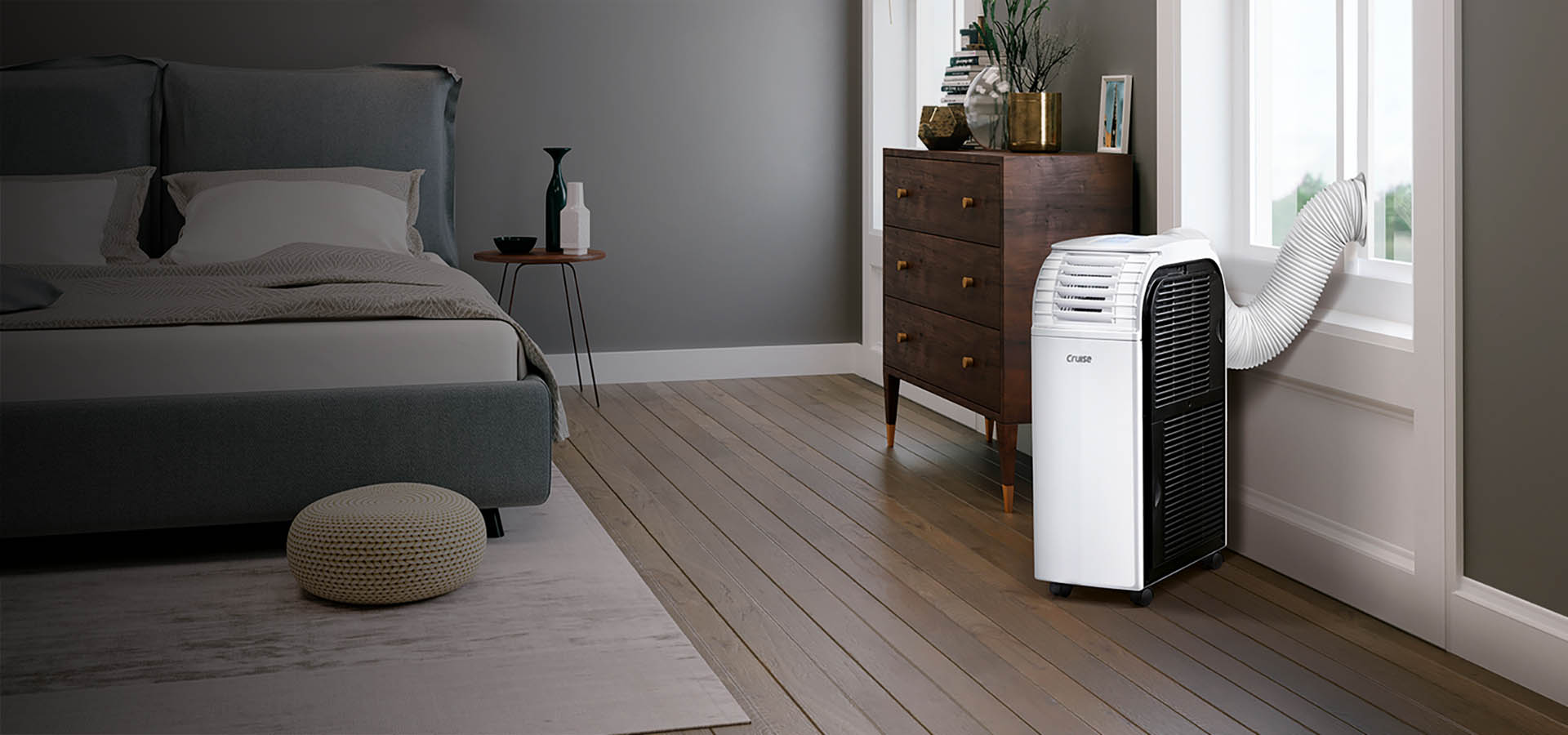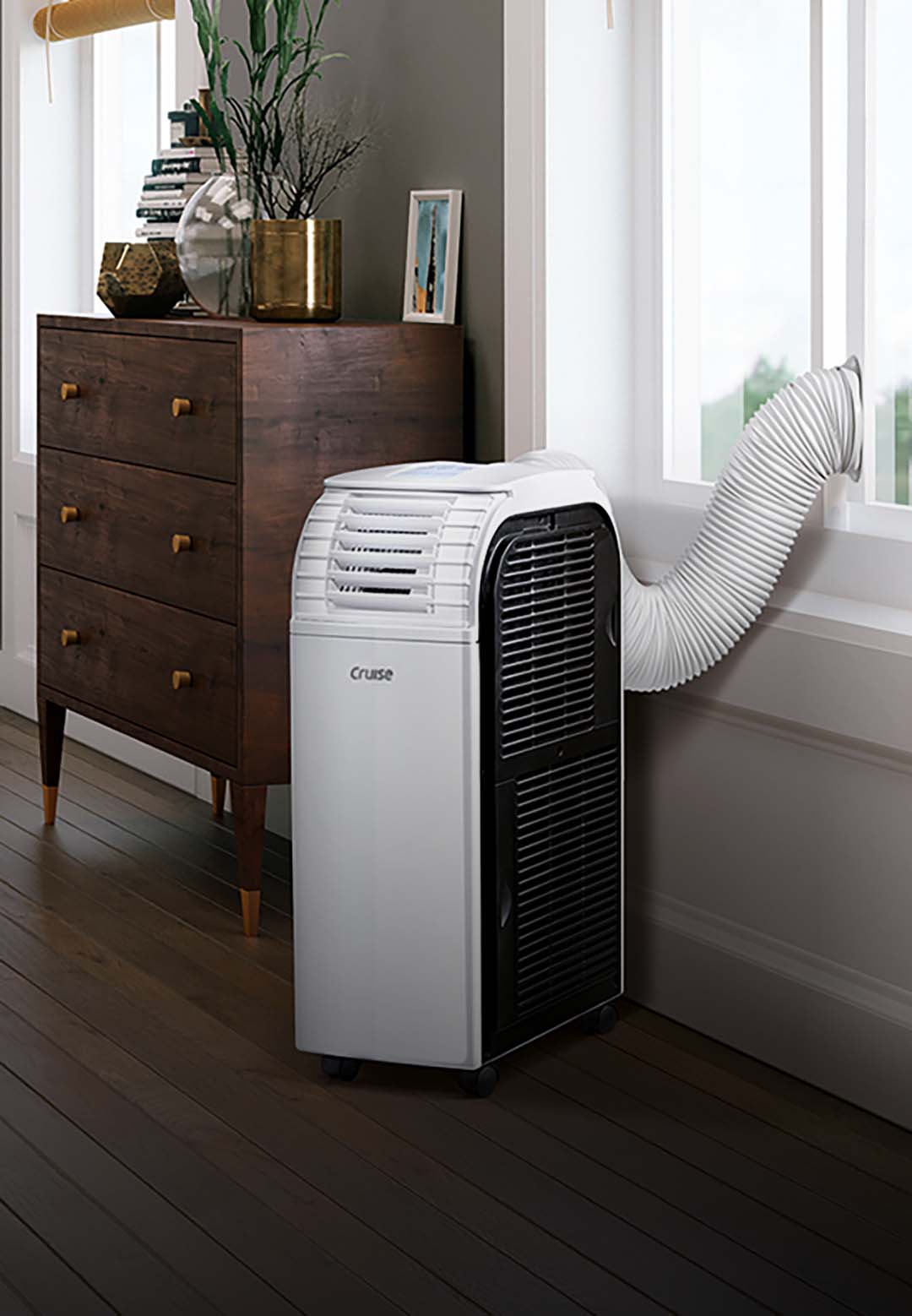

A common factor in urban cities such as Mumbai, Bangalore, Pune or Hyderabad is the unbearable heat in summer. So it is imperative to install an air conditioner at home, especially when we are working more from home these days with lockdowns in place across India. Moreover, air-conditioning’s health benefits far outweigh its costs in tropical summers like ours.
But the fear of virus transmission by letting a service engineer into your home to install and commission the indoor & outdoor unit of the AC for your home is a serious concern while following the current social distancing guidelines issued by governments. A second constraint also being lack of space for a split or window unit installation due to objection by your apartment association or landlord.
Fret not, there is a solution now. Advancement in refrigeration technology today has provided us with an alternative by which your home can be made cool without mounting the unit or offending your landlord, and even have no fear of virus transmission – and that is choosing a portable air conditioner.

Portable Air Conditioners (PACs), also known as mobile AC’s or spot coolers, are becoming increasingly popular due to their perceived ease of use, convenience and energy efficiency. But portable air conditioning units are designed for cooling a particular spot or small area, and are not meant to replace split air conditioners or an entire home’s cooling system
Every basic portable air conditioner is equipped with a refrigeration system, coolant, reservoir and a ventilation or exhaust hose. The general working principle of portable ac’s is through exchange – draw in hot ambient air from the room, condenses and release cool air into the room. Condensation occurs by means of a refrigerant which is circulated in cooling coil pipes. The heat generated by the process is then transferred outside the room through an exhaust duct or window kit. This kit is attached to the window, wall or ceiling.
Portable air conditioners also work as dehumidifiers, drawing out moisture while cooling the air. The moisture is collected in a water tank, which can be removed by a self evaporating system or draining the water by unplugging the drain outlet.
You can install a portable unit all by yourself without the need of a technician. No need of drilling any holes or screws. All you have to do is find an exit for the exhaust hose, plug it in and you’re good to go. A portable unit may suffice for a single room, a small rental studio or even a garden tent.
Most PACs are lightweight and come with wheels, which makes it easy to roll them from room to room. Think of a portable AC unit as the carry-on luggage of air conditioners. If you live in a home with a pesky home owners association that doesn’t allow the use of split ac installations, a portable air conditioner is a great alternative. It can be kept in your workspace when your working-from-home, and easily move it to the bedroom closer to night-time.
SEE MORE: If your housing association is preventing you from a permanent AC installation , check out the new sleek portable air conditioner series.
Because the portable units are smaller than window units and split air conditioners, and are only designed to cool small spaces, portable air conditioners are naturally energy efficient. In fact, they are less expensive sometimes in comparison to large split air conditioners. The cost savings can be substantial when you need the cool air for only one room versus investing in multiple air conditioners for different rooms basis your family and lifestyle.
Portable ACs are beneficial for cooling small spaces while also dehumidifying the air. Different modes allow you to switch between cooling, dehumidification and fan only functions. The dehumidification feature helps reducing allergens and air pollution indoors even if you’re not using it for cooling purposes. Some of Cruise’s premium products also have multiple modes that serve as an air conditioner, a heater, a dehumidifier, an air purifier, or a fan for year-round comfort and convenience.
When comparing portable air conditioners with other designs, there are three top reasons for choosing a portable air conditioner:
Can I use a portable air conditioner in a room without a window?
Just like all other air conditioning units, portable ac's need to have somewhere to release heat. A window is usually the most convinient ways for portable air conditioning to vent, but there are other ways. For example, you can attach the exhaust tube to an air vent. Maybe the best idea would be to install a small vent leading directly outside.
How long does it take to set-up the portable air conditioner?
It only takes 5 minutes and a few steps to fully set up a portable air conditioner. No permanent installation necessary and all parts are included. The recommended installation process is: Place unit on a levelled dry surface. Select an open area and leave at least 20 inches (50cm) space around the unit. The hot air exhaust duct should not have any bends greater than 45°.
What is the difference between portable air conditioners and air coolers?
Air coolers use moisture to cool an area, which adds humidity to a room which makes them unhygienic and less effective in areas that are already humid. They also have a smaller cooling radius. A portable air conditioner actually cools the air with a refrigerant heat exchange system driven by a compressor (like conventional split or window AC’s) and generally has a larger cooling radius than an air cooler.
Is it safe to leave portable air conditioners on during the night?
All portable air conditioners collect condensation as they cool. This is generally collected in a water tray in the air conditioning units themselves. Some portable units have a self-evaporative system wherein the water will be recycled to cool the condenser. If the inside water tank is full, the compressor will stop running. Turn off air conditioner, drain the water from the water tank by uncapping the rubber plug from the drain port and let the water drain out. Otherwise, portable air conditioners can be operational for long hours.
Can I lengthen the exhaust hose on a portable air conditioner?
While it is possible, extending the exhaust hose too much can often void the warranty on your air conditioning unit as it causes a drastic drop in energy efficiency. In addition, if your workmanship isn’t professional, it might be unsafe to lengthen the exhaust hose. If you would like to move your portable air conditioner, just move the exhaust hose with it. If you’re short on space, check out the best air conditioners for a small home.
